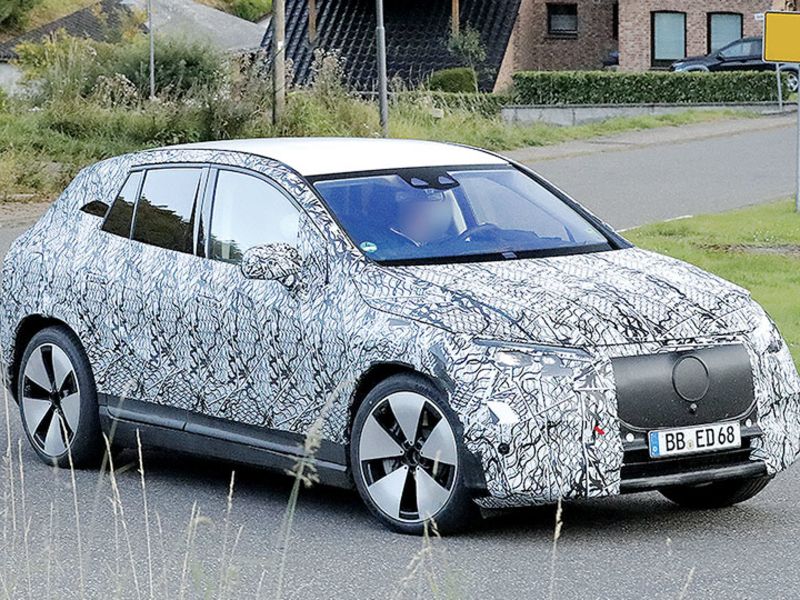
About a year from now, Mercedes-Benz is expected to launch the battery-electric EQE crossover, to be built at its Alabama plant. It will be slightly smaller than the EQS SUV, also coming next year.
The EQE crossover and sedan, which is due in 2022 as well, are similar in size and market segment as Mercedes’ E-Class cars and crossovers, while the EQS SUV and sedan, launching this fall, slot above and are intended to be the electric equivalent of the company’s flagship S-Class vehicles.
The EQE vehicles are built on a Mercedes-Benz scalable and flexible EVA platform and are expected to spawn several models, including rear-wheel-drive and all-wheel-drive dual-motor variants that will offer at least two battery pack options.
The heavily camouflaged EQE crossover was snapped recently undergoing testing in Germany. Though specific design details are hidden, the vehicle’s steeply raked windshield, flush-mounted headlights, smooth and rounded sides and sloping roof point to a slickly styled vehicle in which reducing aerodynamic drag and wind noise were high priorities.
As part of its Ambition 2039 plan, the company expects to offer EVs in all the segments in which it competes by the end of next year. It also calls for the company to launch EV-only vehicles starting in 2025 and become carbon neutral by 2039.
The EQE crossover is likely to be available with Mercedes’ MBUX infotainment system, which comprises three screens and offers more than 44 inches of viewable space.
Mercedes officials have not announced any details of the EQE crossover’s drivetrain or battery pack performance. However, the EQE sedan could offer a few clues. The EQE 350 has a single 288-hp motor that drives the rear wheels and is powered by a 90-kilowatt-hour, 10-cell lithium ion battery pack that can go about 410 miles between charges.
That number would likely go down in the heavier, less aerodynamic EQE crossover.